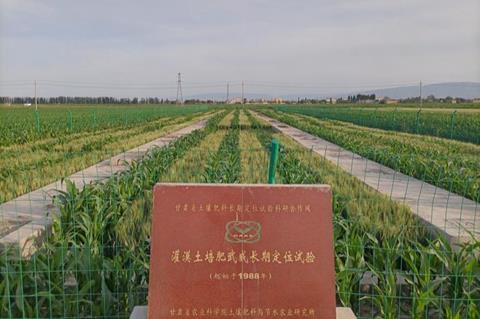Scientists have presented evidence of the unique role of green manure in keeping and improving soil health, specifically hairy vetch(Vicia villosa Roth L., which is widely used in seasonal or spatial fallow farmland in northern China.

This study is led by Prof. Weidong Cao (Institute of Agricultural Resources and Regional Planning, Chinese Academy of Agricultural Sciences) and Prof. Zongxian Che (Institute of Soil and Fertilizer and Water-saving Agriculture, Gansu Academy of Agriculture Sciences).
The fertilization experiment was established in 1988 in a wheat maize cropping system in Wuwei County, Gansu Province, China, which includes the typical fertilization system (chemical N, cow manure, straw, and green manure) in China.
“Fully understanding the advantages and disadvantages of typical fertilization is of great significance to guide farmland management in China,” Zongxian Che says.
Long-term fertilization experiments
Weidong Cao together with his student Guopeng Zhou, sought to determine whether each fertilizer differs in its ability to change certain soil C and N processes, such as organic C mineralization, N fixation, and N2O release. The team performed microcosmic experiments on the basis of long-term typical fertilization experiments to determine the potential functions of soil, and analyzed the driving mechanism of soil functions.
The team found that the long-term application of green manure or cow manure produced wheat yields equivalent to those obtained with chemical N, with the former providing higher soil functions and allowing the functionality of N cycling, especially soil N mineralization and biological N fixation, to control wheat production. The keystone phylotypes within the global network rather than the overall microbial community dominated the soil multifunctionality and functionality of C, N, and P cycling across the soil profile (0–100 cm).
Metabolic pathways
The researchers also confirmed that these keystone phylotypes consisted of many metabolic pathways of nutrient cycling and essential microbes involved in organic C mineralization, N2O release, and biological N fixation. For instance, the chemical N, green manure, and cow manure resulted in the highest abundances of amoB, nifH, and GH48 genes and Nitrosomonadaceae, Azospirillaceae, and Sphingomonadaceae within the keystone phylotypes, and these microbes were significantly and positively correlated with N2O release, N fixation, and organic C mineralization, respectively.
Amazingly, the team demonstrated that organic fertilization increased the effects of the network size and keystone phylotypes on the subsoil functions by facilitating the migration of soil microorganisms across the soil profiles and green manure with the highest migration rates.
“These new exciting results add to growing evidence the unique role of green manure in keeping and improving soil health. They suggest green manure can facilitate the migration of soil microorganisms across the soil profiles and promote soil biological N fixation. We hope that this study will provide selectable strategies for controlling soil functions and productivity by mediating soil microbial keystone taxa in agricultural ecosystems,” Weidong Cao says.







No comments yet